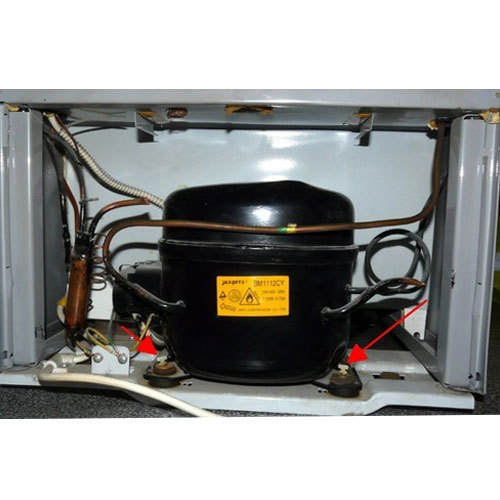
Purpose of Fridge Compressors:
Fridge compressors are a critical component in refrigeration systems, and their primary purpose is to circulate refrigerant throughout the system, which is essential for cooling the interior of the fridge or freezer. Here's a breakdown of their key functions:
-
Compression: Fridge compressors take in low-pressure, low-temperature refrigerant gas from the evaporator coils inside the fridge. They then compress this gas, increasing its temperature and pressure.
-
Heat Dissipation: The compressed refrigerant gas is sent to the condenser coils, where it releases heat to the surrounding environment. This process causes the gas to condense into a high-pressure, high-temperature liquid.
-
Expansion: The high-pressure liquid is then passed through an expansion valve or capillary tube, where it rapidly expands. This expansion causes the refrigerant to become very cold and turn into a low-pressure gas.
-
Evaporation: The low-pressure, cold gas is circulated through the evaporator coils inside the fridge, where it absorbs heat from the interior, effectively cooling the contents.
-
Cycling: The compressor continues to run in cycles to maintain the desired temperature inside the fridge. It pumps refrigerant gas between the evaporator and condenser coils, regulating the temperature.
Replacing a Fridge Compressor:
Replacing a fridge compressor is a complex task that generally requires the expertise of a trained technician due to the intricacies of the refrigeration system and the handling of refrigerants. Here is a general overview of how it is done:
-
Diagnosis: Before replacing a compressor, the technician will first diagnose the issue to ensure that the compressor is indeed the problem. Common signs of a faulty compressor include the fridge not cooling or making unusual noises.
-
System Depressurization: The technician will safely depressurize the refrigeration system, ensuring that there is no refrigerant left in the system. This is done to avoid the release of refrigerants into the atmosphere, which can be harmful to the environment.
-
Disconnecting the Compressor: The technician will disconnect the old compressor from the system by removing the electrical connections, refrigerant lines, and any mounting brackets or bolts.
-
Replacement: The new compressor is installed in place of the old one. This involves connecting the refrigerant lines, electrical connections, and securing the compressor properly.
-
System Recharge: After replacing the compressor, the technician will recharge the system with the appropriate amount of refrigerant. This requires precise measurement to ensure the correct pressure and temperature levels.
-
Leak Testing: The technician will conduct a leak test to ensure that there are no refrigerant leaks in the system. If any leaks are found, they will be repaired before the system is recharged.
-
System Testing: The entire system is tested to verify that the new compressor is functioning correctly, and the fridge is cooling to the desired temperature.
-
Cleanup and Disposal: Any old refrigerant and parts are safely disposed of or recycled according to environmental regulations.
Replacing a fridge compressor is a highly specialized task, and it's crucial to hire a professional with the necessary knowledge and equipment to perform the job correctly. Attempting to replace a compressor without the proper training can lead to safety hazards, improper installation, and environmental harm due to mishandling of refrigerants.

